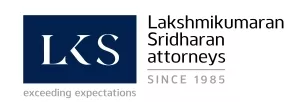- within Tax topic(s)
- in United States
- within Tax topic(s)
- in United States
- within Government and Public Sector topic(s)
In response to the recent Goods and Services Tax ('GST') 2.0 reforms, the government has issued important clarifications to guide stakeholders on pricing compliance for pre-packaged commodities and pharmaceutical products. In the event of future changes in taxes such as GST or customs duties, stakeholders can expect similar compliance procedures to apply.
Legal Metrology Notification
The Department of Consumer Affairs' Legal Metrology Division has issued Circular No. I-10/14/2020-W&M dated 18 September 2025 ('LM Circular'), superseding its earlier circular dated 9 September, 2025, permitting the manufacturers, packers, importers and their representatives of pre-packaged commodities to voluntarily declare the revised retail sale price/ maximum retail price ('MRP') on the unsold stock impacted by the recent changes in GST rates introduced under the GST 2.0 reforms.
This permission has been granted under Rule 33 of the Legal Metrology (Packaged Commodities) Rules, 2011 ('LM Rules'). The LM Circular provides a significant relaxation by waiving the requirement to publish advertisements in newspapers as mandated under Rule 18(3) of the LM Rules. Further, it has reaffirmed that LM Rules read along with the LM Circular does not mandate affixing revised price stickers for manufacturer/packer/importer/their representatives on unsold packages manufactured before 22nd September, 2025 and lying with them.
Key points for manufacturers/ packers/ importers/their representatives of the pre-packaged commodities
- Manufacturers/ packers/ importers allowed to voluntarily re-sticker MRP and sell unsold stock:
- Manufacturers/ packers/ importers of the pre-packaged commodities are allowed to voluntarily re-sticker/stamp/online print the revised MRP on the unsold stock manufactured/packed/ imported prior to revision of GST.
- The original MRP must remain visible and must not be overwritten or obscured by the revised MRP.
2. Relaxation of Rule 18(3) of the LM Rules:
The requirements prescribed under Rule 18(3) of the LM Rules have been relaxed as follows:
- No requirement to publish advertisement regarding revised MRP in newspapers.
- Only notices to be issued to wholesale dealers, retailers, etc regarding the revised prices.
- Copies of such notices must be sent to the Director, Legal Metrology (Central Government) and Controllers of Legal Metrology in all States/UTs.
- Manufacturers, packers, and importers must take immediate steps sensitise dealers, retailers, and consumers about the GST rate revision through all available communication channels, including electronic, print, and social media.
3.Use of unused packaging material or wrappers post GST rate changes:
- The LM Notification has also clarified that any packaging material or wrapper (labelled with old MRP) which could not be exhausted by the manufacturer/ packer/ importer prior revision of the GST rates, may be used for packing of material upto 31 March 2026 or till such date the packing material or wrapper is exhausted, whichever is earlier, after making corrections required in MRP by way of stamping or putting sticker or online printing.
- Declaration of revised unit sale price on unsold pre-packaged commodities / unused packaging material or wrapper being pre-printed is not mandatory and is a voluntary compliance that maybe undertaken by the manufacturer/ packer/importer.
NPPA Notification for sale of drugs
Further, the National Pharmaceutical Pricing Authority ('NPPA') has issued two Office Memorandums F. No. 12(24)/2021/DP/NPPA/Div.II(Vol.II)-Part(1) dated 12 September 2025 and 13 September 2025, respectively (collectively, 'NPPA Office Memorandums'), clarifying that the benefit arising from the reduction in the GST rates shall be mandatorily passed on the consumers/patients with effect from 22 September 2025 and the manufacturers/marketing companies selling drugs/formulations (including medical devices), may re-label or re-sticker the existing stock available in the market to reflect the revised MRP. However, such re-labelling or re-stickering is not mandatory, provided that the benefit of the reduced GST rate is effectively passed on to the end consumer.
Key point for manufacturers/marketing companies selling drugs/formulations (including medical devices)
- Revision of MRP of drugs/formulations (including medical devices):
- Manufacturers/Marketing Companies selling drugs/formulations (including medical devices) shall revise the MRP of such products with effect from 22 September 2025 to reflect the reduction in the GST rates.
- It must be ensured that the benefit of the reduced GST rates is passed on to the end consumers/patients.
2.Issuance of revised price by manufacturers/marketing companies:
- Manufacturers/Marketing Companies selling drugs/formulations
(including medical devices) are required to issue revised price
list or supplementary price list, in Form V/VI, as applicable,
reflecting the revised GST and revised MRP (corresponding
adjustments) to the following stakeholders:
- Dealers for display to consumers;
- Retailers for display to consumers;
- State Drug Controllers;
- The Government
3.Immediate measure to sensitise the supply chain and consumers:
- Manufacturers/Marketing Companies shall take immediate measures to sensitise dealers/ retailers/ consumers about reduction in the GST rates through all possible channels of communication including electronics (email, SMS, websites, digital platforms), print (newspapers, brochures, circulars) and social media.
- Industry associations may also release advertisements in leading national newspaper including vernacular newspaper to reach out to the dealers/ retailers to ensure compliance of the revised GST rates across the distribution chain.
4.Vountary re-labelling or re-stickering of MRP:
- Recalling, re-labelling or re-stickering on the label of the container or pack of stocks released in the market, prior to 22 September 2025, is not mandatory, provided that the manufacturer or marketing company ensures compliance with the revised GST rates at the retailer level through appropriate mechanisms (e.g., revised price lists and stakeholder sensitisation).
- Manufacturers/Marketing Companies may, at their discretion voluntarily undertake re-labelling or re-stickering of existing stock available in the market.
- Voluntary re-labelling/re-stickering should be carried out in a phased manner to avoid disruption in the availability or supply of drugs/formulations (including medical devices) in the market.
- The Central Drugs Standard Control organisation ('CDSCO') has also issued an Order F. No. DC-DT-15011(11)/122/2025 dated 11 September 2025 ('CDSCO Order') in this regard. The importers and manufacturers of class C (moderate high risk) and class D (high risk) medical devices can affix stickers of the revised MRP in line with the revised GST rates within 3 months from the date of the CDSCO Order i.e, by 11 December 2025.
Price monitoring at local level
The Ministry of Finance's Tax Research Unit, has issued direction vide F. No.-190349/43/2025-TRU dated 9 September 2025 ('Price Monitoring Directive') regarding monitoring commodity price changes in light of GST 2.0 reforms.
All Principal Chief Commissioners and Chief Commissioners of Central Tax have been directed to compile sector-wise price data before and after the revised GST rates (i.e., before and after 22 September 2025) from field formations and trade associations for the next six months for 54 goods across key sectors including:
- Food & Beverage;
- Household & Personal Care;
- Consumer Durables
- Stationery & Toys;
- Pharmaceuticals & Medical Supplies.
Data should reflect comparable quantities (e.g., grams or millilitres) and track MRP variations. The First Report is to be submitted by 30 September 2025 and thereafter, the Monthly Reports by the 20th of each month until March 2026. This Price Monitoring Directive reflects the government's intent to closely monitor price transmission across sectors and ensure that the benefits of the revised GST rates are effectively passed on to consumers.
Recommendations for retailers to promote GST-driven discounts
The Department of Promotion of Industry and Internal Trade has also issued a notification D.O. No.P-59030/13/2025-e-Commerce dated 15 September 2025 ('DPIIT Notification') recommending the following three key actions for physical retail chains:
- ProminentPromotion: Retailers are encouraged to visibly advertise 'Discount due to GST' across their networks using posters, flyers, and media ads (print, TV, and online).
- TransparentBilling: Retailers are encouraged to reflect the GST reductions in customer receipts/bills as 'GST Discount,' especially for high-impact products.
- Sales Monitoring: Retailers are encouraged to monitor sales performance during the festive season and highlight through appropriate communication channels.
LKS Comments
The LM Circular provides much-needed clarity for manufacturers, packers, importers and dealers of pre-packaged commodities in light of the GST 2.0 reforms. It is imperative for all stakeholders to undertake a comprehensive review of their product portfolios to identify items impacted by the revised GST rates and initiate corresponding revisions in the MRP.
The revised MRP must be communicated transparently and accurately across the supply chain, including distributors and retailers, to comply with Rule 18(3) of the LM Rules.
It is recommended that stakeholders maintain documentary evidence of all price revisions, including copies of notices, and updated price lists, to demonstrate compliance and mitigate potential legal risks.
The DPIIT Notification complements the LM Circular by encouraging retailers to visibly pass on benefits to consumers. It urges retail chains to actively promote GST-linked discounts and reflect them clearly on invoices.
In the healthcare sector, the NPPA Office Memorandums and CDSCO Order, clarify that MRP revision via stickering or relabelling is not mandatory for existing drug/formulations and medical device stock. Manufacturers may do so voluntarily; however, they must issue revised price lists or supplementary price lists (Form V/VI) and sensitise the supply chain and consumers.
Stakeholders must exercise due diligence in revising MRPs and ensure that such revisions are strictly proportional to the change in applicable GST rates and that benefits of revised MRPs are passed on to consumers to avoid violations under Section 171 of the Central Goods and Services Tax Act, 2017 (anti-profiteering provisions). The Price Monitoring Directive serves as a critical compliance tool to track price movements before and after the GST revision.
The Department of Consumer Affairs has also aligned the National Consumer Helpline (NCH) with the GST 2.0 reforms by introducing a dedicated GST grievance redressal category on the Integrated Grievance Redressal Mechanism (INGRAM) portal. This initiative empowers consumers to report GST-related issues across sectors and promotes participatory compliance by facilitating timely resolution through collaboration with Central Board of Indirect Taxes and Customs (CBIC) and other authorities.
Further clarification may be required to ensure uniform implementation across all levels of the supply chain and to safeguard consumer interests effectively.
The content of this article is intended to provide a general guide to the subject matter. Specialist advice should be sought about your specific circumstances.




